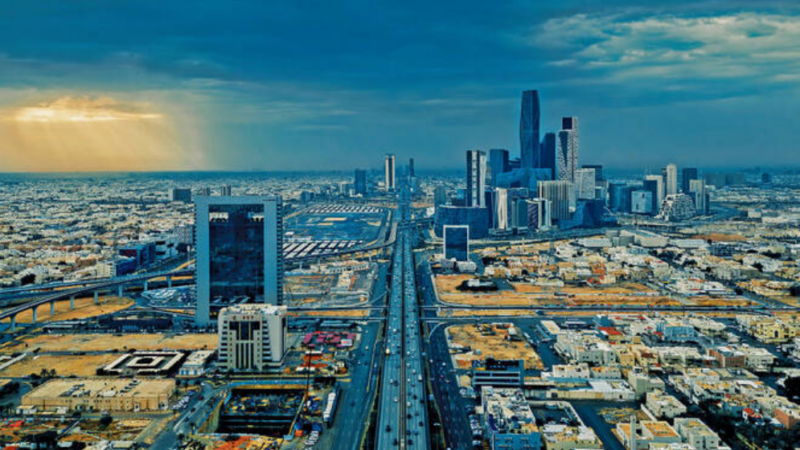Water stress worsens food insecurity crisis in Arab states

Water stress and scarcity have increased food insecurity in the Middle East and North Africa region. The climate crisis has affected rainfall patterns, resulting in drier conditions. Sustainable governance is needed to ensure water is rationalised.
The World Resources Institute (WRI) released a report on August 16 that highlights the severe water stress countries in the Arab region are currently facing.
The report reveals that freshwater supplies for agricultural and drinking purposes are under severe pressure, which poses a significant threat to the economic growth and food security of the region.
According to the report, the Middle East and North Africa are the areas most affected by water stress, where 83% of the population is exposed to this crisis, followed by South Asia with 74% of the population being exposed to water stress.
The five countries that are the most vulnerable to water stress are Bahrain, Kuwait, Lebanon, the Sultanate of Oman, and Qatar.
Additionally, Egypt, Jordan, Libya, the Emirates, Palestine, Yemen, Algeria, Morocco, Saudi Arabia, Tunisia, and Iraq are also among the 25 countries that are most exposed to water stress in the world.
“53.9 million people in the Arab world experienced acute food insecurity in 2021, a 55% increase from 2010”
Hunger threatens the region
Currently, more than 3.3 billion people reside in arid regions and areas with high water stress, where at least 40% of renewable water supplies are consumed annually.
However, according to the report’s authors, this number is expected to increase by 2050 and include an additional billion people. Researchers attribute water stress in affected countries in the region to reduced supply combined with demand from domestic, agricultural, and industrial uses.
Salwa Farid, a professor of economics at Cairo University, has stated that the increasing deterioration in global water security can severely affect global food security.
This is particularly true with fluctuations in rainfall as a result of changing climate zones with the increasing pace of global warming. Salwa warned that the water situation’s deterioration in the region will cause drought and soil deterioration, leading to a decline in agricultural production and exacerbation of the hunger problem.
Hunger is defined as the state of being unable to obtain food above the minimum dietary energy requirement over at least one full year. According to the UN Food and Agriculture Organization (FAO), a population at risk of hunger can be estimated by the average availability of calories, equity of food distribution, and minimum energy requirements.
In March, a UN report revealed that 53.9 million people in the Arab world experienced acute food insecurity in 2021, a 55% increase from 2010. The prior year saw a 5-million-person increase. Moderate and severe food insecurity have also increased, with an estimated 154.3 million people expected to experience it in 2022. This is an increase of 11.6 million from the previous year.
The report highlights the risk of water scarcity in the Middle East and North Africa region, even with short-term droughts. By 2050, the study predicts that all residents in the area will face very high water stress.
Salwa explains that Yemen and Syria are the Arab countries most affected by the food crisis. Egypt and Iraq are also threatened by water scarcity, especially with their deteriorating economies and the Ukrainian crisis. She emphasises the importance of activating control tools and controlling markets to prevent monopolisation and manipulation by traders.
Additionally, she suggests creating strategic reserves for essential commodities. Water stress occurs when demand exceeds available supply or when poor water quality limits its use. This can lead to freshwater resource depletion in terms of quantity and quality, through overexploitation of the aquifer and river drying, as well as pollution and saltwater intrusion. The report warns that without better water management, population growth, economic development, and climate change will exacerbate water stress.
Causes of water stress
The report highlighted that the Middle East and North Africa region has the highest level of water stress in the world. Climate change is affecting rainfall patterns, resulting in drier conditions and further reducing already scarce water supplies. This is happening at a time when demand for water is high, for agriculture, drinking, and industry.
Alyssa Offutt, a PhD researcher in water governance at the Delft Water Institute in the Netherlands, believes there are several reasons for water stress, including the distribution of surface and groundwater sources, climate change, inadequate water treatment infrastructure, and poor management enabling unsustainable use.
Alyssa explained to The New Arab that armed conflicts and migration can worsen water stress, affecting water rights, access to facilities, operation and maintenance, and dependence on natural resources. This can limit food security and livelihood. These different factors converge in different ways across the Arab region, contributing to and compounding water stress and its effects.
Inadequate infrastructure in Iraq and water use in upstream countries contribute to a decrease in polluted water flows in the southern marshes, leading to migration from the area, according to Susanne Schmeier, a Professor of Water Governance and Management at the Delft Water Institute. In Somalia, recent flash floods affected crops and existing infrastructure, while in Sudan, conflict has impacted water treatment, leading to concerns about potential waterborne diseases.
Susanne emphasises the need to consider water insecurity in all countries to address concerns related to water stress. “Although all countries face water stress, their experiences of water stress differ in how it affects water security, food security, livelihoods, and migration,”
Mitigating water stress
The water governance professor believes that many steps can be taken to mitigate the challenges posed by water stress and food insecurity. These steps could include building sustainable governance that allocates water use in a way that does not exceed renewable supplies. Flexible arrangements can be made within and between countries to support allocation and take into account changing climatic conditions.
Salwa Faried stresses that sustainable ways to secure water for all residents in the region require rationalising water consumption, making use of unconventional water, searching for new sources of water, using smart irrigation tools, improving the efficiency of water use in all sectors, and making use of unconventional water such as rainwater, treated wastewater, deep groundwater, and seawater desalination.
She also stressed the necessity of expanding water harvesting operations in the rainy seasons in dams and water basins to enhance water reserves and developing awareness programs to rationalise water consumption in all states of the region.






